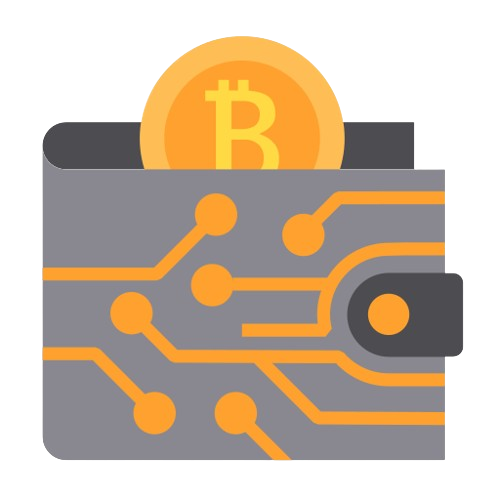
As cryptocurrency continues cementing its place in the global financial system, expanding your comprehension of the underlying market dynamics that determine pricing and adoption is essential. Implementing secure Bitcoin wallet management strategies in tandem allows you to capitalize on volatility while safely navigating the disruptive changes underway across economic and technological spheres.
Evaluating Bitcoin Wallet Options
Cryptocurrency wallets enable accessing blockchain networks to monitor balances, transact digital assets, and interact with decentralized applications. Bitcoin supports wallet types ranging from hot to cold storage, each with unique security profiles and utility tradeoffs requiring evaluation:
Hot wallets like browser-based and software options connect directly to the internet, delivering convenience at the expense of increased vulnerability to remote attacks. Leading solutions offer robust encryption safeguards and facilitate integration with institutional custody platforms.
Hardware wallets store private keys on external devices disconnecting from online access when not actively transferring funds. Recovery seed backups support restoring holdings if devices become damaged.
Paper wallets involve printing private keys as QR codes on hardened materials for durability. Though entirely offline, paper wallets require securely generated keys and extremely diligent ongoing backup protocols to avoid irrevocable loss.
Understanding these options alongside your activity patterns allows designing a layered wallet approach balancing security, recovery protections, staking functionality, and transactional flexibility in a manner aligning to your risk tolerances.
Evaluating Exchange & DeFi Risk Profiles
In addition to self-managed wallets, cryptocurrency exchanges provide custodial solutions for acquiring, trading and storing digital assets. Assessing exchange security and insurance practices remains critical given increasing attacks. Leading US exchanges implement robust protocols like cold storage backups, penetration testing, and third-party custody with limited insurance coverages.
Decentralized exchanges (DEXs) arrange swaps directly between counterparties using self-executing smart contracts instead of centralized brokers. By retaining local asset control, DEXs limit certain counterparty vulnerabilities. However, revelations of administrator key compromises underlying some DEX protocols highlight why assessing transparency around key management and smart contract risks is vital due diligence.
Understanding these platform risk profiles prepares you to prudently allocate across the spectrum spanning self-managed wallets, exchanges, and DeFi protocols seeking optimizations balancing security, liquidity access, yields, and transaction activity requirements.
Market Adoption & Real-World Drivers
In addition to technical infrastructure resiliency, evaluating indicators of expanding cryptocurrency adoption and real-world transactional usage is key to tracking maturation vital for long-term valuations. Metrics around corporate treasury allocations, nation-state legal tender support, ETF launches, and blockchain network growth offer insights.
Equally important are emergent microeconomic integrations enabling cryptocurrency fungibility. Mainstream branded credit cards offering rewards accrual in Bitcoin or USD Coin represent legitimizing endorsements. Renowned stadium venues accepting tokens for concessions offer further visibility. Such developments undermine perceptions of niche impracticality, fueling adoption and compounding effects.
These tangible indicator examples support methodology-driven models predicting ascending digital asset equilibrium prices as acceptance reaches viral turning points. Their ever-broadening accessibility continues aligning technical underpinnings to economic realities, portending favorable landscapes ahead.
Understanding Volatility Drivers
While positive structural trends prevail, intermittent volatility persists given cryptocurrencies’ uniquely dynamic disequilibrium between perceptually-driven sentiment and algorithmically constrained supplies during price discovery epochs.
As investor euphoria outweighs available coin distributions, violent upside volatility results until participation stabilizes. Perpetual protocol rebalancing allows traders to hedge these swings compared to alternatives requiring timing settlement expirations.

Downside volatility often emerges surrounding uncertainties like restrictive government policies, taxes, macroeconomic downturns, or high-profile cyber incidents temporarily eroding confidence. Such cases trace historically to blockchain network resiliency recovering losses exponentially faster than alternatives though.
While tumultuous periods excite speculators, long-term investors stand to gain the most from methodological analyses distinguishing signal from noise when evaluating volatility catalytic impacts relative to adoption and integration advancements supporting equilibrium reversions beyond momentary distortions.
Securing Keys & Recovery Seeds
Despite market vicissitudes, cryptocurrency empowers individuals to control private wealth sans centralized intermediation. But with great power comes great responsibility secured through private key protections.
Safekeeping keys from compromise is paramount. Enabling security options like whitelisting or multi-signature authorizations offers checks and balances. Storing backups securely across multiple geographically dispersed media fortifies durability protections.
For recovery seeds that restore wallet access, if keys become inaccessible, similar redundant security principles apply. Without meticulously secured backups, lost seeds can render holdings forever irretrievable, unlike traditional banks with fiduciary oversight obligations.
Staying Ahead of Evolving Regulations
Cryptocurrency’s disruptive nature continues sparking unique regulatory responses across jurisdictions that warrant monitoring to ensure continued access and legal compliance. These emergent edicts span areas like taxation, financial crime, consumer protections, and environmental impacts with increasingly coordinated interagency and cross-border cooperation.
Law enforcement crackdowns on illicit dark web activities long funded through pseudonymous transactions have already witnessed exchanges tightening identity verification standards for users.

Meanwhile, tax authorities battle against obfuscation schemes and yield optimization protocols promising contractual cash flows that trigger ongoing reporting, withholding, and auditing obligations.
While regulation invariably trails innovation, proactive adherence and thoughtful implementation allow crypto to balance compliance with its ethos of expanded financial freedoms into the future. Remaining vigilant to consult counsel when activities escalate or span jurisdictions keep one step ahead.
Conclusion
Despite Bitcoin’s stellar track record since inception, maturation into a global asset class shedding volatility en route to equilibrium pricing hinges on persistently expanding adoption and usage indicators verifying its ultimate utility. Judiciously securing holdings across wallets and exchanges offering optimal security-liquidity-yield tradeoffs bolsters the patient investor. Paired with economic literacy guiding actions, integrating cryptocurrency securely into investment and transaction strategies sustains progress unencumbered by transitory disruptions.